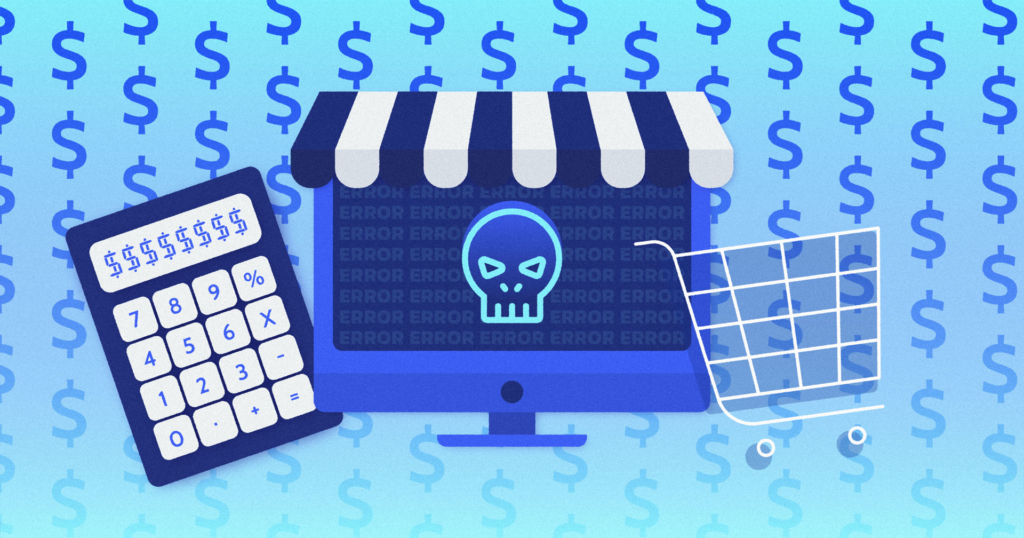At Rewind, we secure a lot of data: we back up about 40.3 terabytes per week. We also perform a lot of restores – but how is that data getting lost in the first place?
We do plenty of research into why 85% of IT pros misunderstand the Shared Responsibility Model, or how nearly half of all SaaS customers have lost data in the cloud.
In 2019, researchers found that 90% of data loss incidents boiled down to a single factor: the human factor (aka mistakes, spilled coffees, cats hopping on keyboards, etc.)
We asked some of our Partners, ecommerce agencies leading the charge to protect their clients’ stores, to share their first-hand experiences of data loss. They pulled back the curtain to tell us about what they’ve seen go wrong and the consequences for ecommerce merchants. .
Accidents happen – when you can least afford them
Sachin Rathor of dizayn.io agency can verify the statistics about human-caused data loss. “Human errors are the most common cause of data loss that we are facing. Employees may accidentally delete important files or databases, or a developer might unintentionally overwrite production data with test data.” Rathor adds that, in many cases, “{data loss} happens due to lack of clarity in communication”.
Isaiah Bollinger at Trellis also has plenty of horror stories to tell. “I have seen customers accidentally delete entire pages of content and lose content. I have also seen clients delete entire themes as well.”
When products are accidentally deleted from an ecommerce store, it’s a race against the clock to get them back online to minimize lost sales. “One of our clients accidentally deleted a product and couldn’t figure out how to get it back up quickly enough,” recalls Marcus Ohanesian, also from Trellis. “Thankfully, we had Rewind installed and I showed them how to do it in a matter of seconds.”
Technical issues and the problem with CSVs
As any store or product manager can tell you, CSV imports can be tricky. The possibilities for error can be endless.
CSV upload broke your store? Here’s what to do next.
Alex Borodin at VT Labs has seen the havoc CSV uploads can cause. He explained to us what happened:
“One of our valued clients is an ecommerce grocery business that stocks a vast range of fresh products. They depended on several third-party producers, frequently resulting in massive inventory changes. The store manager had to upload a new CSV file daily to manage this quickly. But one day, things went horribly awry when there was a mix-up in price formats. Some product prices were in dollars, while others were in cents. The consequences were disastrous. After the manager uploaded a new CSV, some products appeared at one hundred times their original prices, charging customers several thousand dollars instead of the intended several dozen.”
As customers were (understandably) perplexed as to why their groceries suddenly cost so much, the customer’s support team was quickly made aware of the problem. While they were able to refund the unlucky customers who were overcharged, restoring the products at their correct prices was a “long and arduous” task.
“The client realized they had no backup management system or way to restore the data, and they had to manually recheck and re-upload the entire list of thousands of products,” Borodin added. “This took up valuable time and resources, and could have been avoided if they had a proper backup management system.”
Malicious actors
While the majority of data loss incidents are accidental and not malicious, there are some that assuredly are. Cybercrime is a 45 billion dollar industry, and growing rapidly: in 2022, Veaam found that 85% of organizations they surveyed were successfully attacked by ransomware at least once.
Sadly, ecommerce stores are not immune. In fact, they are valuable targets, full of rich data like customer names and addresses, emails, payment information, and more.
Jason Ciment of Get Visible has had his own experience with suspicious activity during site updates. “We got a notice that PHP needed to be updated on the server, but we didn’t know if our client’s site would be compatible with the update.”
Ciment and his team decided to launch a staging site for all of their testing, just in case. He’s glad he did: “This story is karma in action. Literally a few days after all the testing was completed and before the site was moved over, something happened to the live site. We don’t know if it was a hack, or a broken script. We did find a malicious IP address that looked like the source of some bad stuff.”
Since Ciment luckily had a full backup, his team was saved from bug-hunting and downtime was minimized. “If we had not backed up the entire site and started the staging and testing process, we would have been in big trouble trying to remove and repair the problem.”
Data loss happens. Prepare for it with Rewind
As you can see, data loss in ecommerce stores comes from every which way. From simple accidents to malicious attacks, CSV imports to third-party app glitches: there’s a lot that can go wrong. Rewind’s Protection Suite allows Shopify merchants to catch mistakes, threats and disruptions before they become lost sales, and recover lost data in just a few clicks.
We’ve heard it described as a “game changer,” but don’t just take our word for it:
“Luckily, we have Rewind, so we’ve never had a data loss!” – Isaiah Bollinger, Trellis.
Interested in working with an ecommerce agency who gets cloud data security? Check out our Partner Directory.
If you’re an ecommerce agency interested in protecting your clients’ stores (and your team’s work), join our Ecommerce Agency Partner Program today!




